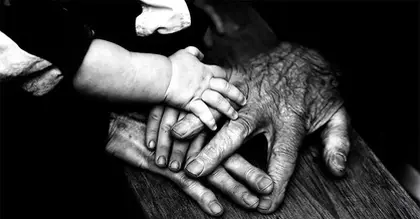
- Parkinson’s disease can have a profound effect on a person’s movement capabilities, leading to tremors, balance, and coordination problems.
- Scientists are exploring whether physical activity can slow down Parkinson’s or lessen the symptoms of the disease.
- Researchers recently found that tai chi may help slow the progression of disease and lower the doses of medications required over time in people with Parkinson’s disease.
The neurological disorder Parkinson’s disease impacts more than 10 million people around the globe.
Many of the main symptoms of Parkinson’s disease revolve around movement changes and issues. These include tremors, gait changes, coordination problems, and balance impairment.
Previous studies show
Now, researchers from Ruijin Hospital at Shanghai Jiao Tong University School of Medicine in Shanghai, China, say the Chinese martial art practice tai chi may help slow disease progression and lower doses of required medications over time in people with Parkinson’s disease.
This study was recently published in the Journal of Neurology Neurosurgery & Psychiatry.
For this study, Dr. Shengdi Chen, distinguished professor and principal investigator in the Department of Neurology and Institute of Neurology in Ruijin Hospital at Shanghai Jiao Tong University School of Medicine in Shanghai, China, and his colleagues monitored two groups of people with Parkinson’s disease for more than five years.
One group of 143 participants practiced tai chi twice a week through a class to improve their technique. The second group of 187 participants continued their standard medical care but did not practice tai chi. The groups were not randomized and were recruited from the Movement Disorder Clinic in Ruijin Hospital.
Disease severity for all participants was assessed at the start of the study, and disease progression — including increases in the need for medications — was monitored over five years.
The researchers found disease progression was slower at all monitoring points in the tai chi group when assessed by overall symptoms, movement, and balance, compared to the control group.
Additionally, the number of study participants who needed to increase their medication over the five years was significantly lower in the tai chi group at follow-up in 2019 and 2020 but not 2021. However, the levodopa equivalent daily dosage (LEDD) increase was significantly higher in the control group at each follow-up time point.
By 2021, the control group was taking more than double the daily dose equivalent of — 436.7 vs 203.99. Cognitive function deteriorated slower, and sleep and quality of life continued to improve in the tai chi group when compared to the control group.
“We [were] surprised to find the long-term beneficial effect [of] tai chi [as] there is no research focused on the long-term effect [of] sports [on] Parkinson’s disease. Doctors should emphasize the importance of physical activity, especially [that] physical activity could delay the need of increasing antiparkinsonian therapies,” Dr. Chen said.
“However, we studied early-stage patients in this research. The postural instability in early-stage patients is not severe. Thus, it should be cautious of tai chi in late-stage patients [as] there is a risk of falls. We plan to discover the application of tai chi in prodromal and late-stage Parkinson’s disease patients,” he added.
After reviewing this study, Ryan Glatt, senior brain Health coach, and director of the FitBrain Program at Pacific Neuroscience Institute in Santa Monica, CA, who was not involved in the study, told Medical News Today that this builds upon the prior knowledge that tai chi is thought to be helpful for individuals with Parkinson’s by providing a longer follow-up period.
“It’s good to see that tai chi is becoming more of an evidence-based intervention for individuals with Parkinson’s. Any type of neuromotor exercise where you’re moving, thinking, and coordinating your body, a lot of those types of exercise modalities are recommended for Parkinson’s disease, such as dance, boxing, (and)
table tennis .”
— Ryan Glatt
Glatt said that most of the exercises recommended for Parkinson’s “may not always have a robust evidence base. So it’s good to see tai chi is one of those modalities that does.”
Dr. Eric L. Hargreaves, clinical assistant professor in the Department of Neurology and clinical DBS neurophysiologist and neuroscientist at the Movement Disorder Program at Hackensack Meridian Neuroscience Institute at Jersey Shore University Medical Center, who was also not involved in the study, said this also adds to the continually growing body of evidence strongly indicating the benefits of exercise in the amelioration of Parkinson’s symptoms.
“At the moment, exercise is the only known treatment that slows down the progression of Parkinson’s. Most of the exercise programs showing clear benefit for Parkinson’s patients have been those involving vigorous or extreme exercise, which [has] given rise to programs like
Rock Steady Boxing and the use of the Theracycle. In this regard, tai chi is quite different, involving slow and well-practiced movements that require balance and attentiveness to detail of movement.”
— Dr. Eric L. Hargreaves
“Consequently, we can now add the concept of mindfulness activity to the list of exercises that benefit Parkinson’s,” Dr. Hargreaves told MNT.
“This mindfulness can be brought to bear in many other instances of an individual’s behavior, such as navigating in tight spaces like the home kitchen while performing standard tasks, which can be especially challenging for people with Parkinson’s disease,” he added.
Dopamine is a molecule in the brain that carries messages between nerve cells. Because Parkinson’s disease damages dopamine molecules, people with the condition experience movement issues.
For this reason, exercise plays an important role in
Physical activity has been shown to help improve non-motor symptoms of the disease, including
And movement can help keep complications that can come out from not being mobile — such as
The Parkinson’s Foundation, in collaboration with the American College of Sports Medicine, has physical activity recommendations that include:
- aerobic activity such as brisk walking, running, cycling,
swimming , or aerobics classes - exercises focused on balance, agility, and multitasking such as
yoga ,dance ,boxing , and tai chi strength training - stretching
Tai chi originated in China more than 1,000 years ago.
It is a type of moving meditation that uses a low-impact, slow-motion series of movements. Tai chi is considered a mind-body exercise because it combines mindful movement with meditation and deep breathing.
Tai chi requires no special equipment and can be performed by yourself or in a group, indoors or outside.
Previous research shows tai chi offers a variety of health benefits, including increased flexibility and strength, improved balance, and improved mood.
This form of exercise can also help ease pain and discomfort for people with long-term
There has also been published research showing evidence that tai chi may help
According to Dr. Shengdi Chen, while the mainstream treatment for treating motor-related symptoms of Parkinson’s disease is drug-based, there are both motor and non-motor complications in the late stage of the disease.
“Besides, the side effects of drug therapies could worsen several symptoms, such as
Dr. Chen said that a study
“More research indicated that sports, including tai chi, could improve several non-motor symptoms and quality of life in Parkinson’s disease. We believe tai chi might improve neural networks and metabolomics and decrease the
Medical News Today also spoke with Dr. Daniel Truong, a neurologist and medical director of the Truong Neuroscience Institute at MemorialCare Orange Coast Medical Center in Fountain Valley, CA, and editor-in-chief of the Journal of Clinical Parkinsonism and Related Disorders, about this research.
“The findings of this study suggest that regular tai chi practice may have long-term benefits for individuals with Parkinson’s disease. It appears to slow disease progression, reduce the need for medication, and improve both motor and non-motor symptoms, ultimately leading to a better quality of life for those affected by the disease,” he said.
Dr. Truong also pointed out that while research on exercise and Parkinson’s disease has consistently demonstrated positive effects, the type and intensity of exercise should be tailored to the individual patient’s needs and capabilities, and consultation with a healthcare provider is advisable before starting any exercise program.
“While tai chi may have unique advantages in terms of balance and reduced risk of falls, conventional exercises offer a wide range of options to target specific aspects of physical fitness. The choice between tai chi and conventional exercise may depend on individual preferences, physical conditions, and the specific goals of the patient, and consultation with a healthcare provider is advisable.”
— Dr. Daniel Truong
The authors point out that this is an observational study and, therefore, cannot establish causation since the two groups were not randomized. While they tried to minimize the differences by matching on disease severity and avoiding selecting people as controls who were not motivated to practice tai chi, they note that there could still be confounding differences between the two groups. They suggest that larger randomized control trials are needed to confirm.





